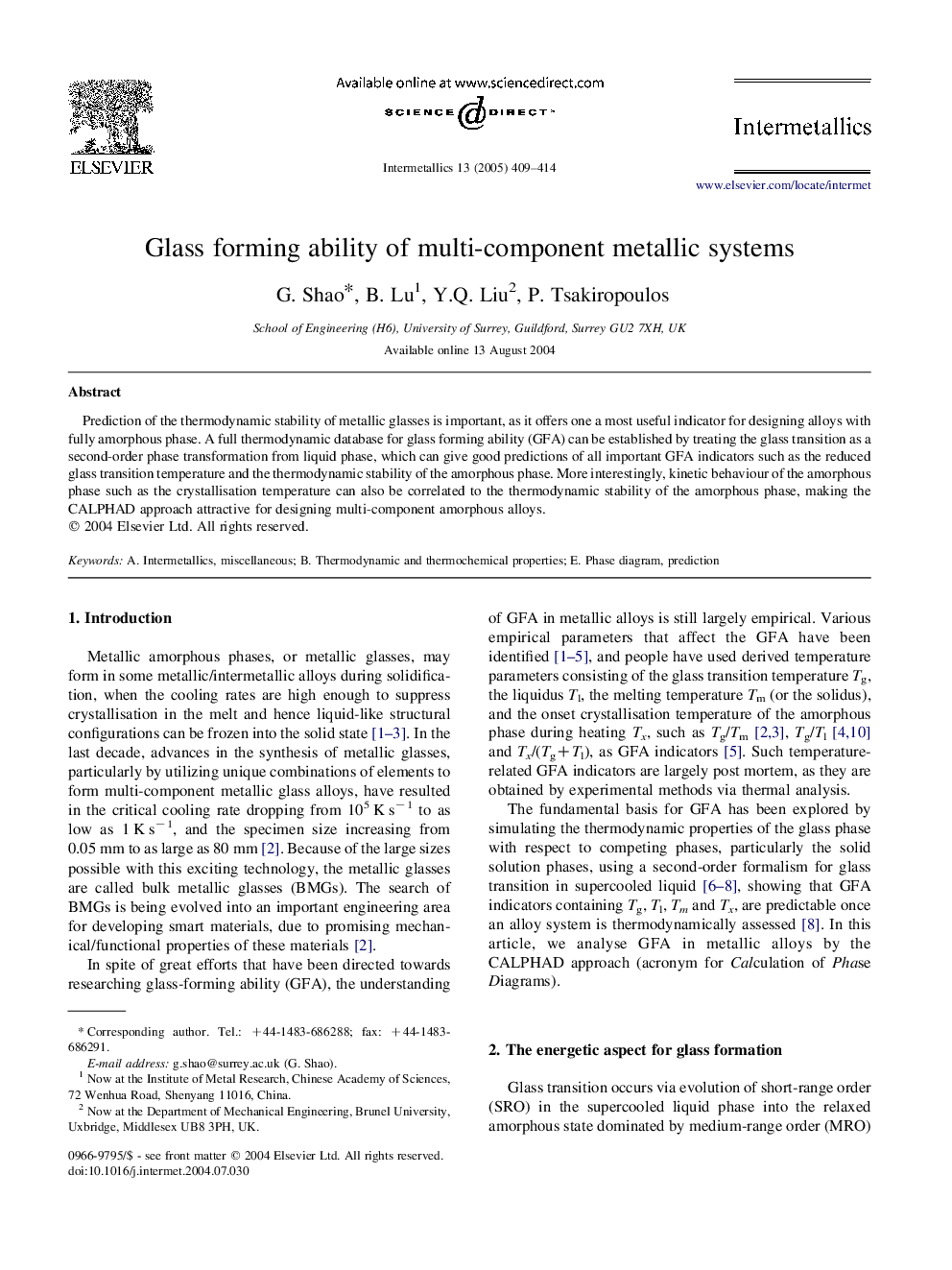| Article ID | Journal | Published Year | Pages | File Type |
|---|---|---|---|---|
| 9802708 | Intermetallics | 2005 | 6 Pages |
Abstract
Prediction of the thermodynamic stability of metallic glasses is important, as it offers one a most useful indicator for designing alloys with fully amorphous phase. A full thermodynamic database for glass forming ability (GFA) can be established by treating the glass transition as a second-order phase transformation from liquid phase, which can give good predictions of all important GFA indicators such as the reduced glass transition temperature and the thermodynamic stability of the amorphous phase. More interestingly, kinetic behaviour of the amorphous phase such as the crystallisation temperature can also be correlated to the thermodynamic stability of the amorphous phase, making the CALPHAD approach attractive for designing multi-component amorphous alloys.
Keywords
Related Topics
Physical Sciences and Engineering
Materials Science
Metals and Alloys
Authors
G. Shao, B. Lu, Y.Q. Liu, P. Tsakiropoulos,
